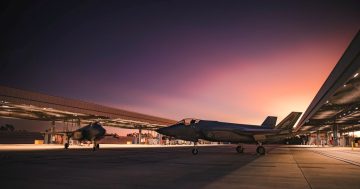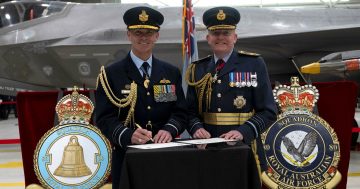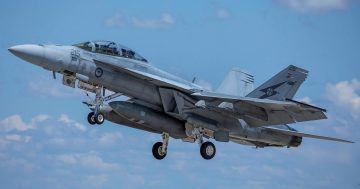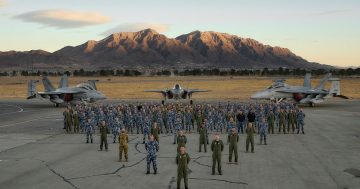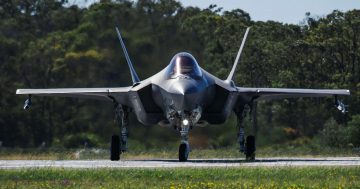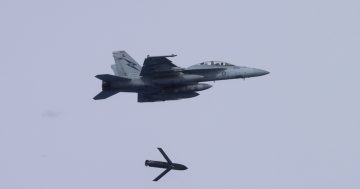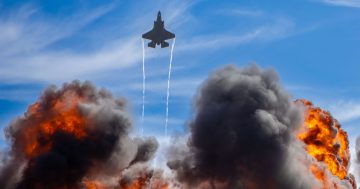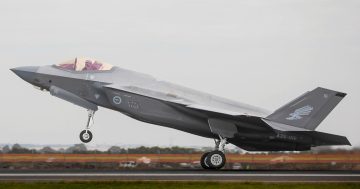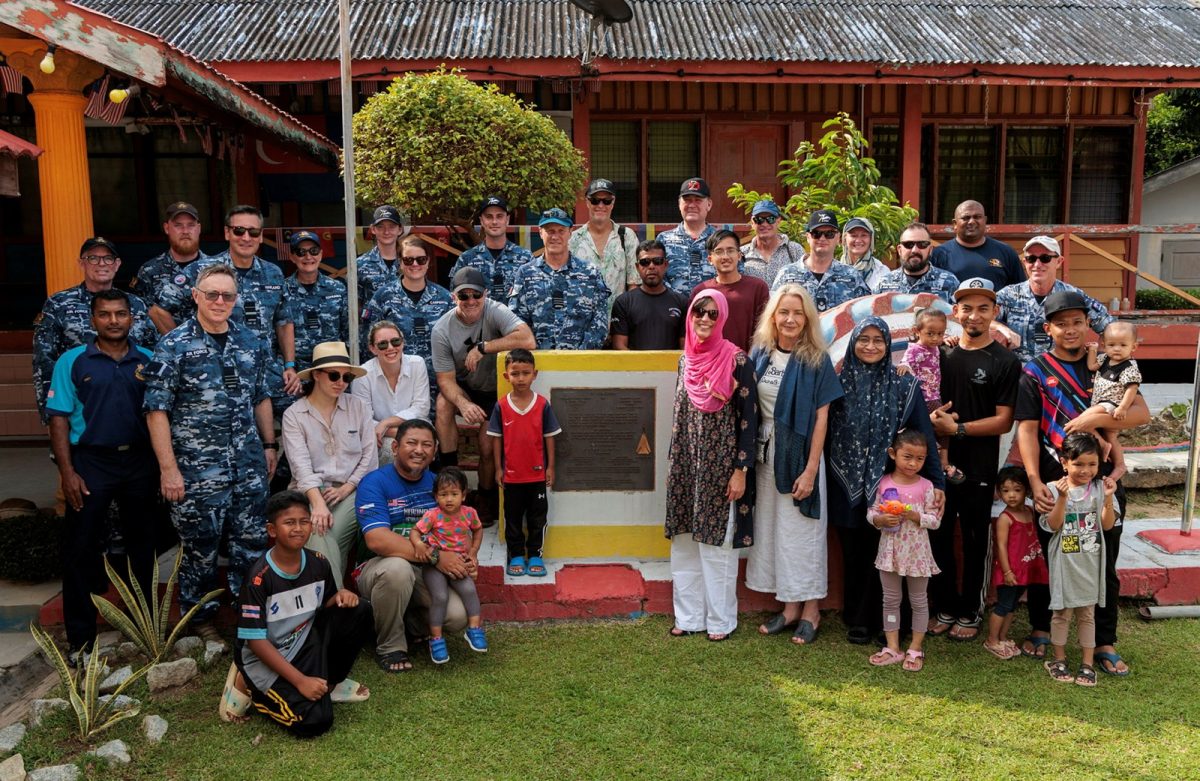
The community and the plaque at the school on Pulau Aur. Photo: LAC Kurt Lewis ADF.
A contingent of Royal Australian Air Force personnel and family members have made a poignant trek to the jungles of Malaysia to commemorate the 25th anniversary of the fatal crash of an RAAF F-111 strike aircraft in 1999.
Exercise Steep Curve saw the group visit the remote crash site to restore a commemorative plaque and hold a service to commemorate their comrades. They then visited a school in a nearby village where they delivered sporting goods and toys and met with community members to reinforce the ties forged in the aftermath of the crash.
The aircraft – an F-111G from No 6 Squadron operating as ‘Pisces 1’ – was conducting a night maritime strike exercise with sister aircraft Pisces 2 as part of the Five Power Defence Arrangements (FPDA) between Australia, the UK, Malaysia, Singapore and New Zealand on the evening of 18 April 1999.
The two strike aircraft were flying low and fast over water preparing to simulate a Harpoon anti-ship missile launch against FPDA warships, when Pisces 1 impacted a ridgeline on the island of Pulau Aur off the coast of Johor, and cartwheeled into the jungle.
Pilot Squadron Leader Anthony ‘Shorty’ Short, 31, from Albury NSW, and Navigator Squadron Leader Stephen ‘Nige’ Hobbs, 33, from Canberra were killed, and their aircraft was destroyed.
Pisces 2 stayed in the area orbiting above the crash site providing information to search and rescue efforts while UK Royal Navy Marines helicoptered in to secure the crash site.
A memorial plaque was subsequently laid at the site alongside some of the aircraft’s wreckage deemed unable to be removed, and another plaque was laid at the school in the nearby village.


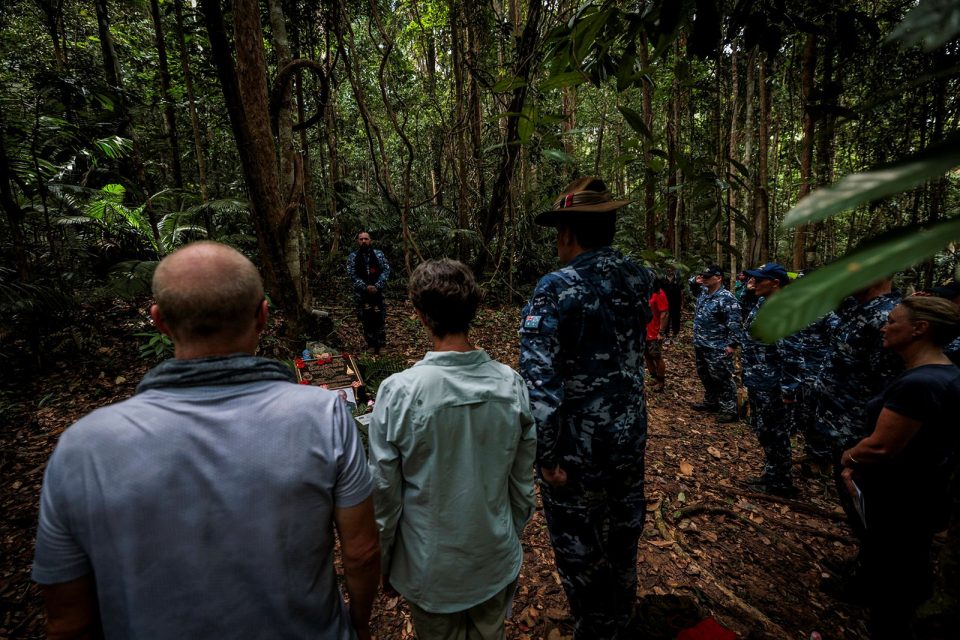
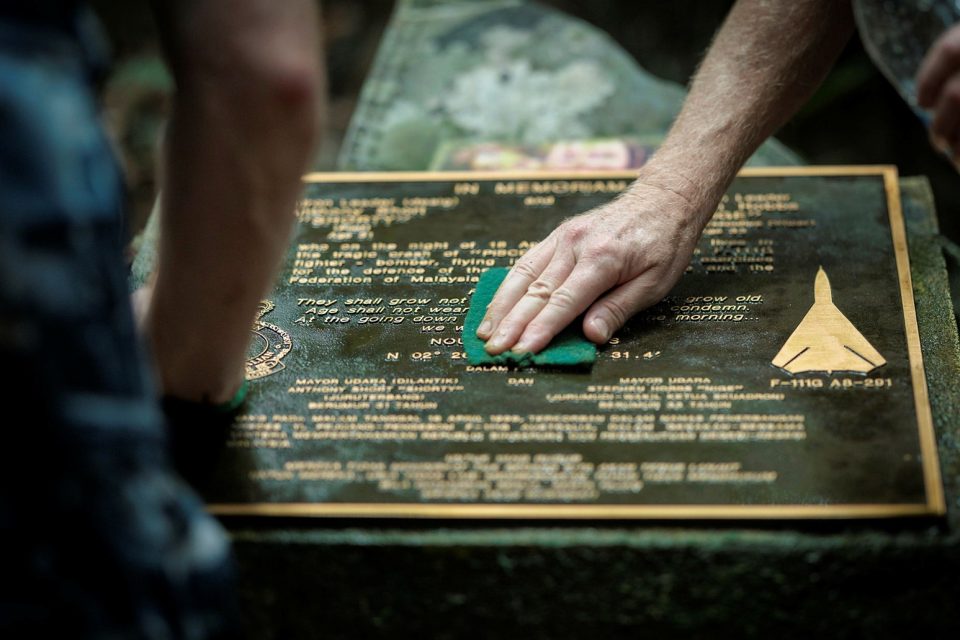
Affectionately called the ‘Pig’ in Australian service, the General Dynamics F-111 was one of the most potent – and one of the most controversial – aircraft to ever serve with the RAAF.
The original F-111C model entered service with the RAAF in 1973 after a delay of nearly five years due to issues with the structure in the aircraft’s revolutionary swing wings. A number of early crashes of US and RAAF F-111s only added to the controversy, but the aircraft provided Australia with a true long-range strike capability and deterrent at a time of great tension in the region.
The F-111 could fly at Mach 2.5 – two and a half times the speed of sound – and at very low altitudes thanks to a terrain following radar (TFR) that would keep the aircraft at a pre-determined height.
It’s variable sweep wings gave it the ability to reconfigure itself for low- or high-speed flight, and its ability to dump raw fuel into its engine exhaust to create a flaming ‘dump and burn’ plume was popular at airshows and used to great effect for the closing ceremony of the 2000 Sydney Olympics.
Australia operated 28 F-111Cs – including four converted ex-US Air Force F-111As – and these aircraft were upgraded in two major tranches in the early 1980s and the late 1990s with improved navigation equipment, sensors and radars, uprated engines, better communications and precision-guided weapons.
Four of the F-111Cs were also modified in the 1980s to carry a reconnaissance camera pack and were redesignated as RF-111Cs.



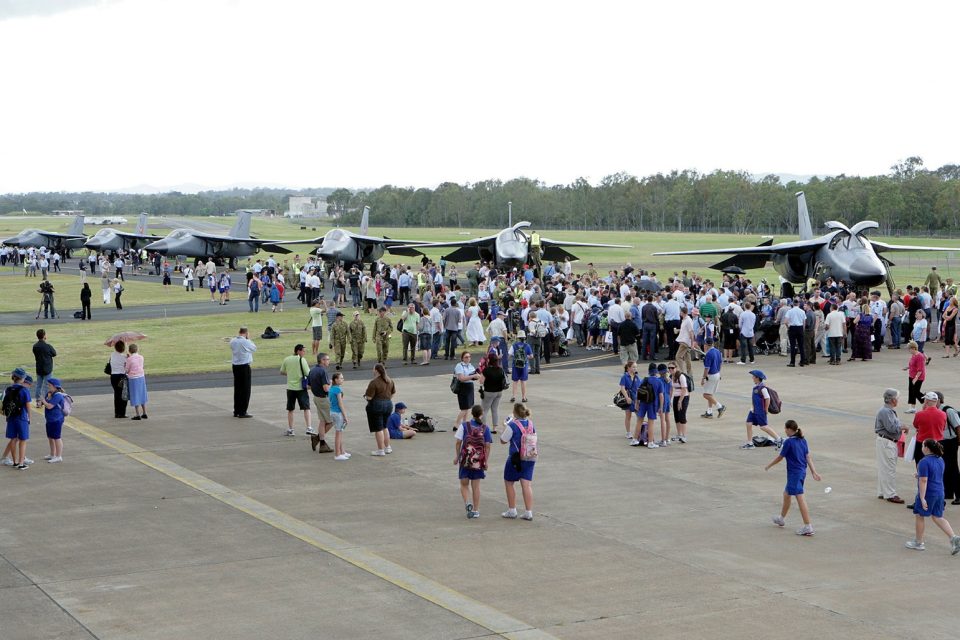
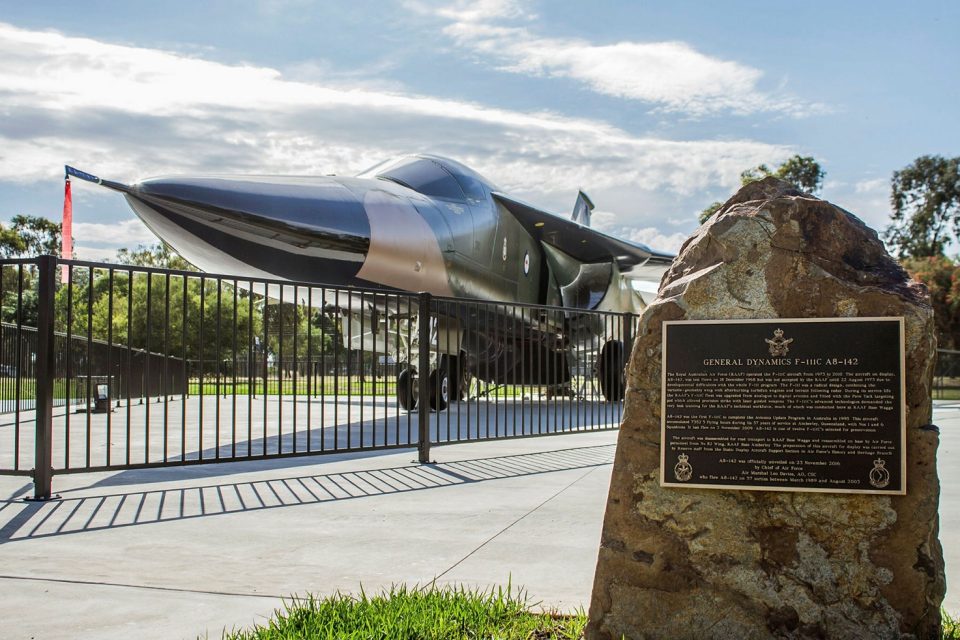
In 1993 the government also bought 15 former US Air Force F-111Gs. The ‘G’ shared common elements but lacked the precision weapons capability of the F-111C, and were acquired primarily to provide additional airframes for training and conversion, air shows, and defence support work. Of those 15 F-111Gs, only eight flew regularly with the other seven being grounded as a source of spare parts shortly after arriving in Australia.
The Pulau crash aircraft had originally been delivered to the US Air Force in 1970 as an FB-111A strategic bomber with the serial 68-0291. After being converted to an F-111G, it was delivered to the RAAF in December 1993 as A8-291.
The RAAF lost seven F-111Cs and one F-111G in crashes between 1973 and 2010, sadly with the loss of 10 aircrew and one rescue diver.
Despite providing a valuable strategic deterrence, the F-111 only flew on a few operational missions in RAAF colours with RF-111C and F-111C reconnaissance flights over Timor Leste in 1999 in support of Australian and UN forces.
The RAAF’s F-111Gs were retired in September 2007, and its final F-111Cs were retired and replaced by the Boeing F/A-18F Super Hornet in December 2010.
Today, 16 F-111Cs and one F-111G have been preserved for display at various museums around Australia including the gate of RAAF Base Wagga and at HARS Aviation Museum at Albion Park, while the Timor Leste mission RF-111C is slated for display in the Australian War Memorial when its renovations are completed in 2026.


